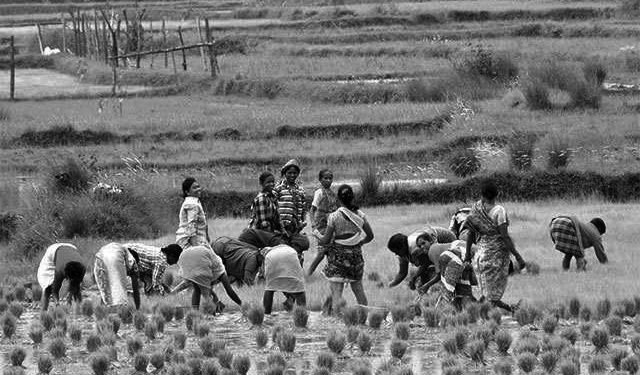Bharat Jhunjhunwala
The Centre for Monitoring Indian Economy has assessed that the incomes of our farmers have increased by 7 percent per year between 2013 and 2019. It will be necessary for the farmer’s income to increase by about 30 percent a year to attain this target. The strategy outlined by the finance minister in the budget is to help farmers increase the quantity of production. For example, the use of balanced fertilisers and solar pumpsets has been encouraged. Higher production normally means higher sale value and higher income.
However, the connection between increased quantity of production and increased income is not only tenuous—it can even be negative because it is intermediated by the price of the produce. The farmers of Palanpur had dumped their large harvest of potatoes on the roads because they could not get a remunerative price for their produce.
The decline in prices of agricultural goods is taking place continuously over the last few decades. New technologies have led to an increase in production. Accordingly, the supply of agricultural goods is rising. This, however, is not accompanied by a parallel increase in demand owing to global population not increasing in proportion. Ever-increasing supply, coupled with relatively stagnant demand is leading to long-term decline in prices of agricultural commodities.
The development of biofuels is providing some relief. Farmers can produce sugarcane to produce biodiesel. But the price of diesel, too, has been declining over the last few years. Improvement in agricultural production from the valiant efforts of the finance minister need not lead to rise in incomes of farmers. On the contrary, it can accentuate their distress in not being able to recover cost of production.
A better strategy would be to improve quality of agricultural produce. The finance minister has taken a small but laudable step in this direction. She said a particular crop will be identified for each district and a horticultural mission put in place around that crop. This is a step in the right direction and must be implemented with all seriousness.
India has unparalleled diversity of climate. We have cold areas in the Himalayas and other mountain ranges during the summer; and warm areas in Kerala and Tamil Nadu during winters. Thus, we can grow winter horticultural crops such as roses in mountains during the summer and in the south during the winter and supply to the global market throughout the year without interruption. A small country as The Netherlands supplies Tulips to the entire world and earns about Rs2,500 croreeach year. This is about 8 percent of the total agricultural produce of Rs 30,000 crore. Arable land in The Netherlands is 10 lakh hectares against 1,600 hectares in India, or 0.6 percent. In other words, The Netherlands is producing about 12 times the value per hectare than us—that too with no diversity in climate. We can certainly do much better. Similarly, a small country as Tunisia earns huge amounts from the export of olives and France from the export of wine from gapes.
The development of district-wise specific agricultural crops will require deep research. Our universities and laboratories of Indian Council of Agricultural Research (ICAR) are way behind. Their situation is highlighted by the experience of a farmer. He was advised by a professor of the department of horticulture of a famed University to plant trees of kino fruit. The poor man planted an acre of kino. Five years later, the fruit were of very small size. The farmer went and complained to the professor of horticulture. The professor replied, “Yes, indeed. My trees also gave small fruit.” That admission did not recover the loss incurred by the farmer. There is a need, therefore, to set up an IIT- or IIM-type horticulture institute in each district or a cluster of districts that can actually provide the correct guidance. This will then have to be supported with warehousing, cold chain and export infrastructures. This will require effort but can be done.
The writer is formerprofessor of economics, IIM Bangalore.







































